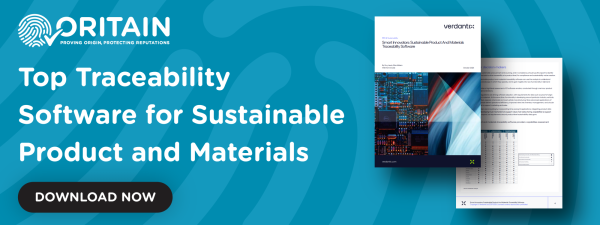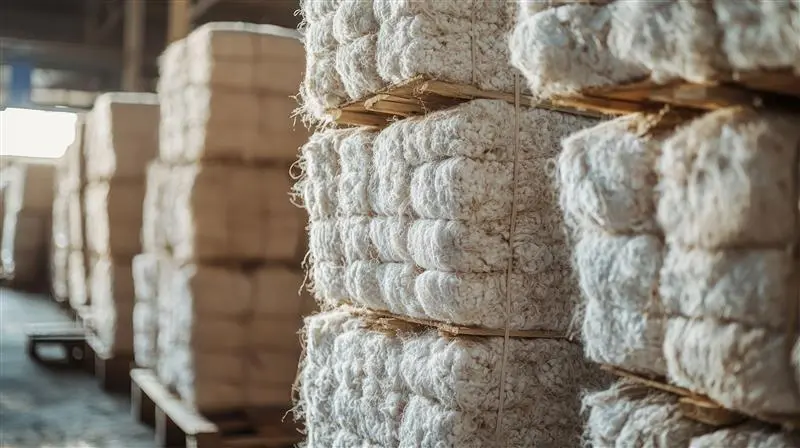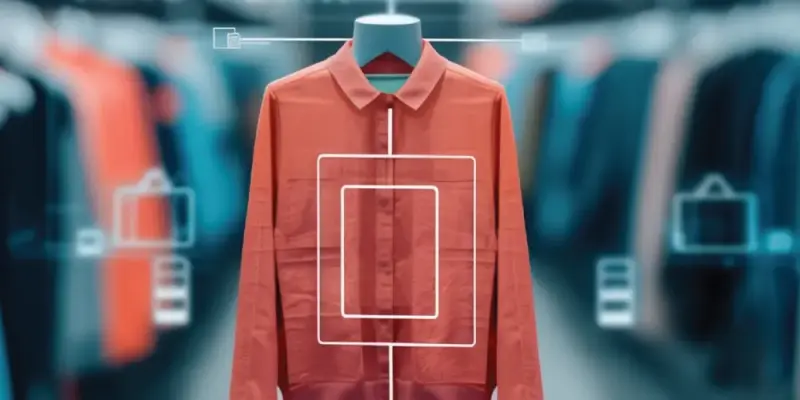The 5 Pillars of Product Traceability: How to Build Transparent, Resilient, and Compliant Supply Chains
By Rupert Hodges | 28 April 2025
minutes to read.

Product traceability is more than just knowing where a product has been. It's about building a transparent and resilient supply chain that fosters trust, ensures compliance, and enables swift action when issues arise.
By providing a verifiable record of a product's journey, traceability builds the compliance and trust which is crucial for meeting regulatory requirements and mitigating reputational risks.
But in today's complex and interconnected world, the journey of a product from its origin to the consumer's hands is often intricate and multifaceted. It involves numerous stakeholders, processes, and geographical locations. Therefore, the ability to effectively trace products throughout this journey is essential.
To achieve this, businesses need to embrace a holistic approach built upon five fundamental principles. In this article we’ll summarize these principles, including insights from two of Oritain’s eminent product traceability experts: Dr Kate Jones, Senior Science Advisor, and Dr Sam Lind, Science Solutions Architect.
1. Define your purpose for traceability
Before implementing any traceability solution, the crucial first step is to clearly define the "why." What specific problems are you trying to solve within your sourcing, manufacturing, and distribution processes?
Without a clear goal, you risk investing in a system that doesn't effectively address your most pressing needs. “Understand what you are trying to achieve and why it's important,” says Dr Sam Lind. “Look for a platform that will provide you insights to solve your business problem, not just data features and benefits.”
For businesses in the food and beverage sector, such as red meat or coffee, the primary driver is often food safety. The ability to rapidly trace the origin of ingredients and the journey of finished goods is paramount for managing food recalls effectively and safeguarding consumer health.
For fashion and apparel businesses, the focus will likely be on regulatory compliance and ethical sourcing. Being able to trace a garment back to the cotton fields or manufacturing facilities provides the necessary evidence of compliance or supports sustainability claims.
By clearly articulating your goals you can then select and implement the right tools and processes to achieve those objectives.
2. Achieve deep supply chain visibility
Surface-level knowledge of your supply chain is no longer sufficient. Both regulatory bodies and consumers expect a deeper level of transparency. Deeper visibility is essential for supply chain risk mitigation.
According to Dr Kate Jones, “Where we've had a lot of success is where clients know their key players very clearly and are working deeper into their supply chains.”
The ripples from unethical sourcing or unlawful labor practices can extend throughout your network, with severe and far-reaching repercussions. News of such practices can quickly spread, eroding consumer trust and potentially leading to boycotts and financial penalties.
Relying solely on the assurances of your suppliers can be unwise, and is one of the main cotton traceability challenges. Suppliers may make claims about their processes or the quality of their raw materials that are simply untrue. Trust, but verify – by delving deeper into the supply chain, you increase your ability to recognize any potential discrepancies.
Take the example of cotton; it passes through numerous stages, from growers to ginners, spinners, and manufacturers. Without effective product traceability that extends beyond your direct suppliers to tier 2 and tier 3 vendors, your business is essentially operating in the dark, vulnerable to misinformation and noncompliance risks.

3. Integrate traceability seamlessly into operations
For product traceability to be truly effective, it must be seamlessly integrated into your existing operations and processes – without necessitating disruptive changes to your manufacturing workflows or causing downtime in production.
It must align with critical control points in your production process – the key stages where a product undergoes significant transformations or changes hands between vendors. For instance, in the textile industry, these critical points might include spinning, weaving, dyeing, and garment assembly.
The goal is to embed traceability and sustainability into your core operational workflows in a way that is efficient, accurate, and minimizes disruption.
However, it's crucial to ensure that traceability follows the product itself, not just its packaging. Dr Sam Lind explains the packaging traceability challenges. “Many products are initially packed into boxes or cartons with barcodes but are removed and repackaged multiple times during the distribution process. If your system only tracks the outer packaging, you lose visibility of the individual product once it's separated. That makes the traceability efforts ineffective.
“Best practice is to consider the business systems to support traceability data collection, ensuring they are objective and obtained in real time with as little manual intervention is possible.”
4. Authenticate and verify supply chain data
The data generated by your product traceability system is only as valuable as its accuracy and integrity. While traceability tools can provide valuable insights into supply chain mapping and product movements, this information must be rigorously validated.
If the data entered into the system is incomplete, misleading, or even fraudulent, the resulting insights will be flawed, leading to inaccurate conclusions and potentially flawed decision-making. Remember the adage, ‘garbage in, garbage out’.
Validating might involve cross-referencing information from different sources and conducting physical audits of supplier facilities.
It’s imperative to authenticate this information thoroughly. “It’s not just about doing one off testing or spot testing here and there,” cautions Dr Kate Jones. “One test in itself is unimportant. We don't live and die by the outcomes of one test.
“In this ecosystem of traceability, Oritain is there to underpin authentication of the information that's there and develop insights on whether that information is accurate through aggregation of testing. Through forensic science we develop programs of how many audits we need to capture in order to mitigate risk or get assurance.”
The ability to aggregate and authenticate information from various points in the supply chain is crucial for building trust in your traceability system and making informed decisions regarding your sourcing, manufacturing, and distribution strategies.

5. Use traceability insights to drive corrective action
The ultimate value of product traceability lies not just in the information it provides but in the positive supply chain compliance tactics it inspires.
The insights gained should empower you to make informed decisions, mitigate risks effectively, and build a more sustainable and ethical business. Corrective actions benefit the business through improved sustainability reporting and ESG achievements.
The data might validate the efficiency and compliance of your current systems, providing valuable affirmation and paving the way for further progress. Conversely, it might highlight areas of weakness or potential risks that must be addressed before they escalate.
This involves developing and implementing clear corrective action plans. Dr Kate Jones provides an example: “We work with a major retailer that promote cotton origin on their product swing tags. But in baseline testing we found that only 37% of their suppliers were using authentic cotton. Through rigorous origin verification testing, alongside improvement of systems and SOPs (Standard Operating Procedures), we helped them achieve over 90% compliance in twelve months.”
For businesses exporting into markets with stringent regulations, such as the United States under the Uyghur Forced Labor Prevention Act (UFLPA), the ability to take swift and decisive corrective action is paramount. Failure to do so can result in significant penalties and disruptions to market access.
(Image credit: Vecteezy)
Product traceability is no longer a luxury but a fundamental requirement for businesses operating in today's complex global marketplace. By embracing the five core principles above, organizations can build transparent, resilient, and trustworthy supply chains.
Find out how scientific origin verification can help protect your supply chains and promote your business. Contact us to speak with our team.
Disclaimer: The information provided in this document does not and is not intended to constitute legal advice. Instead, all information presented here is for general informational purposes only. Counsel should be consulted with respect to any particular legal situation.






